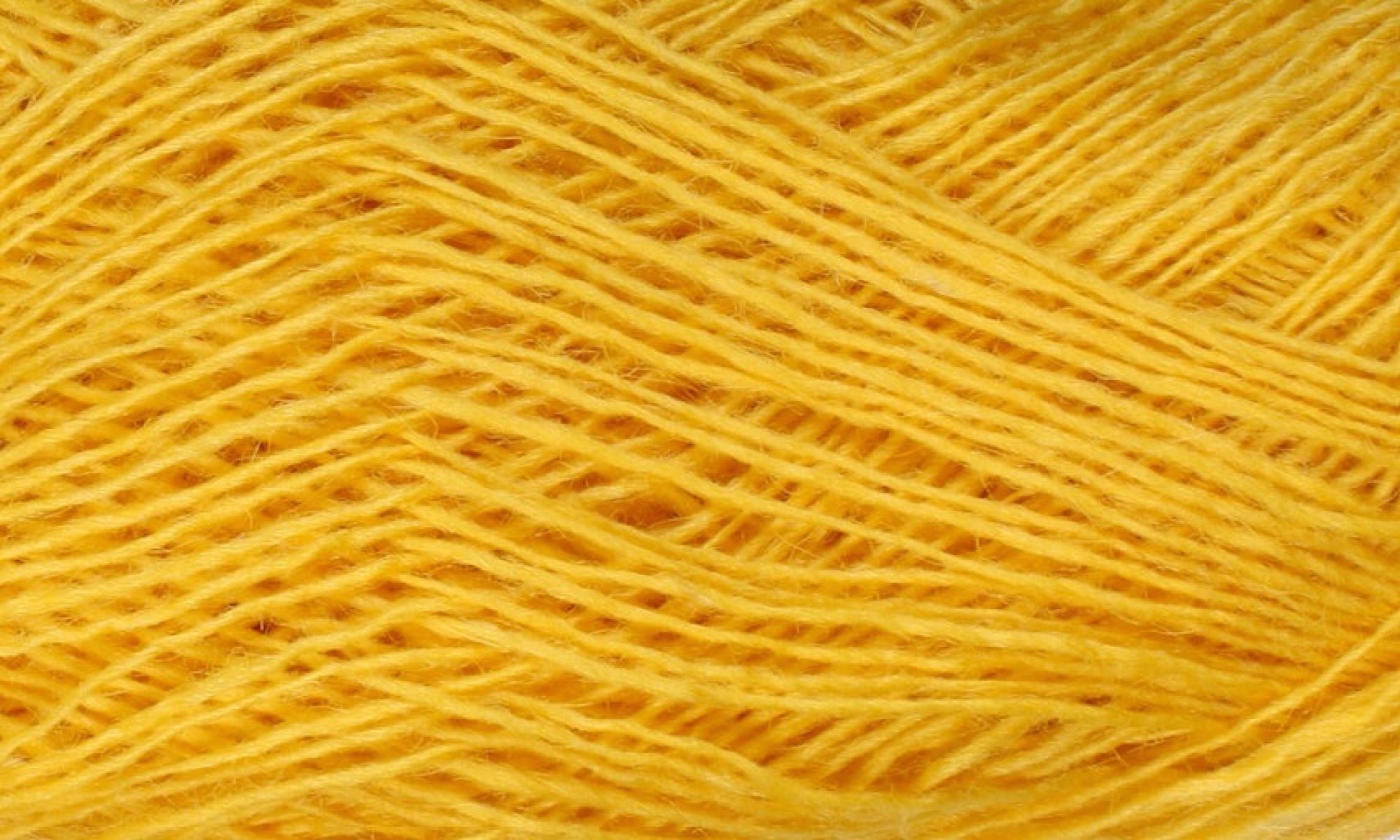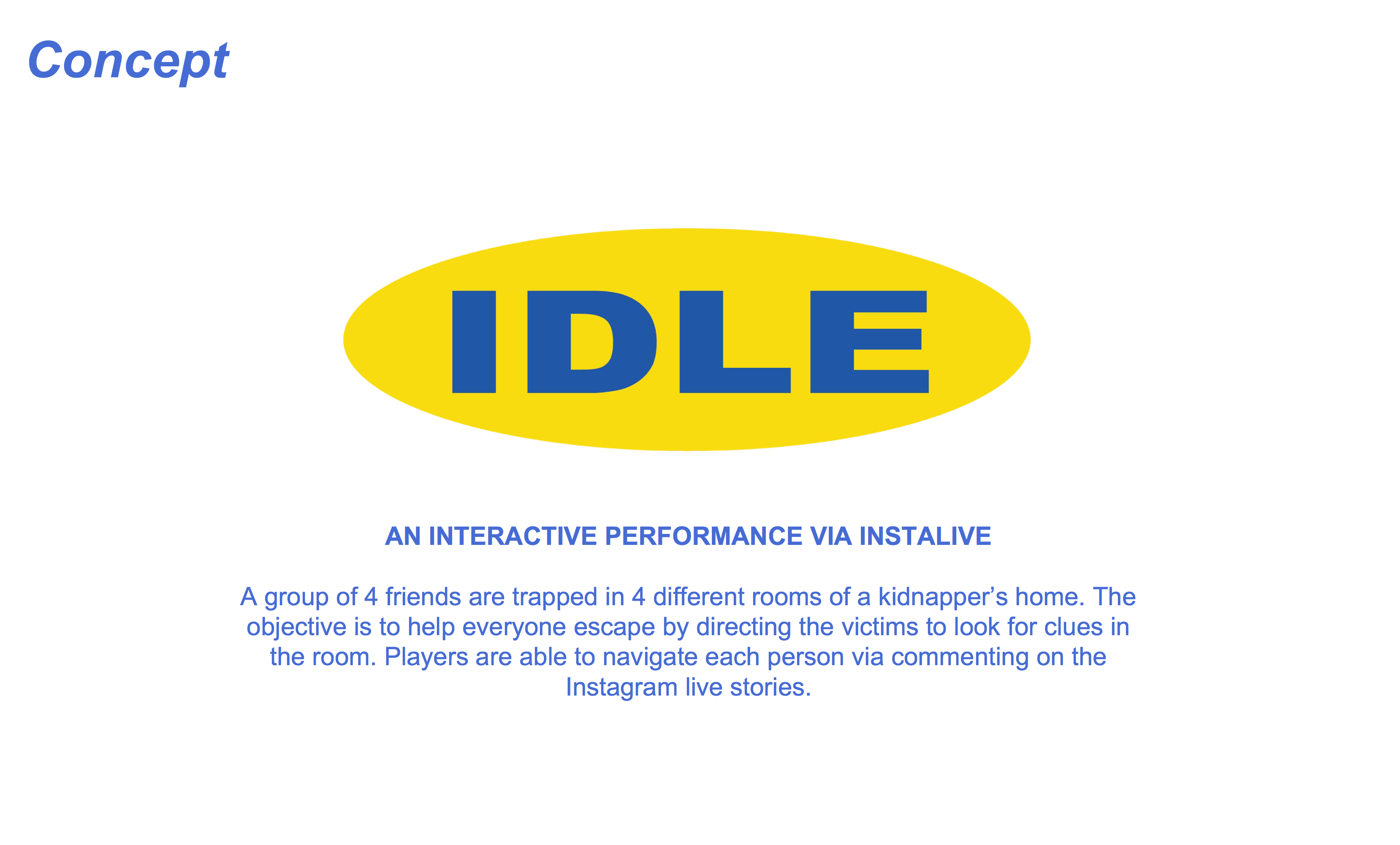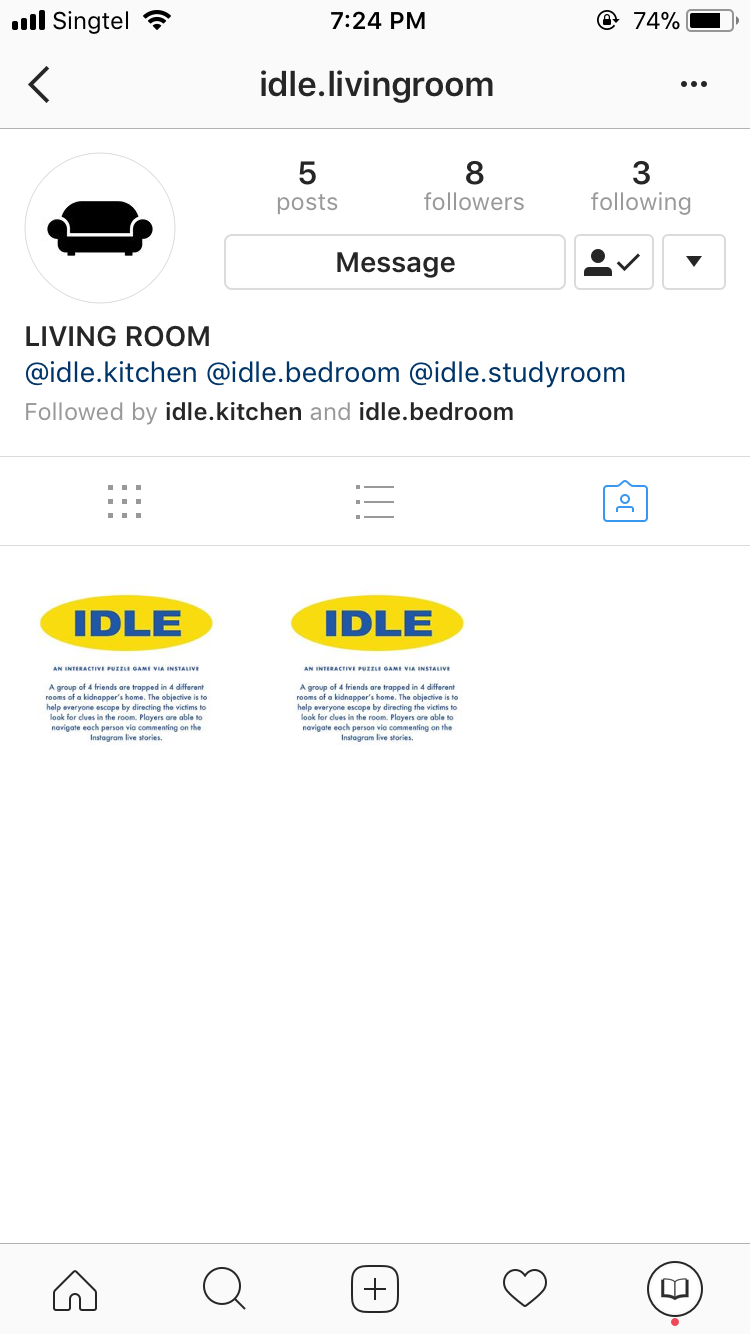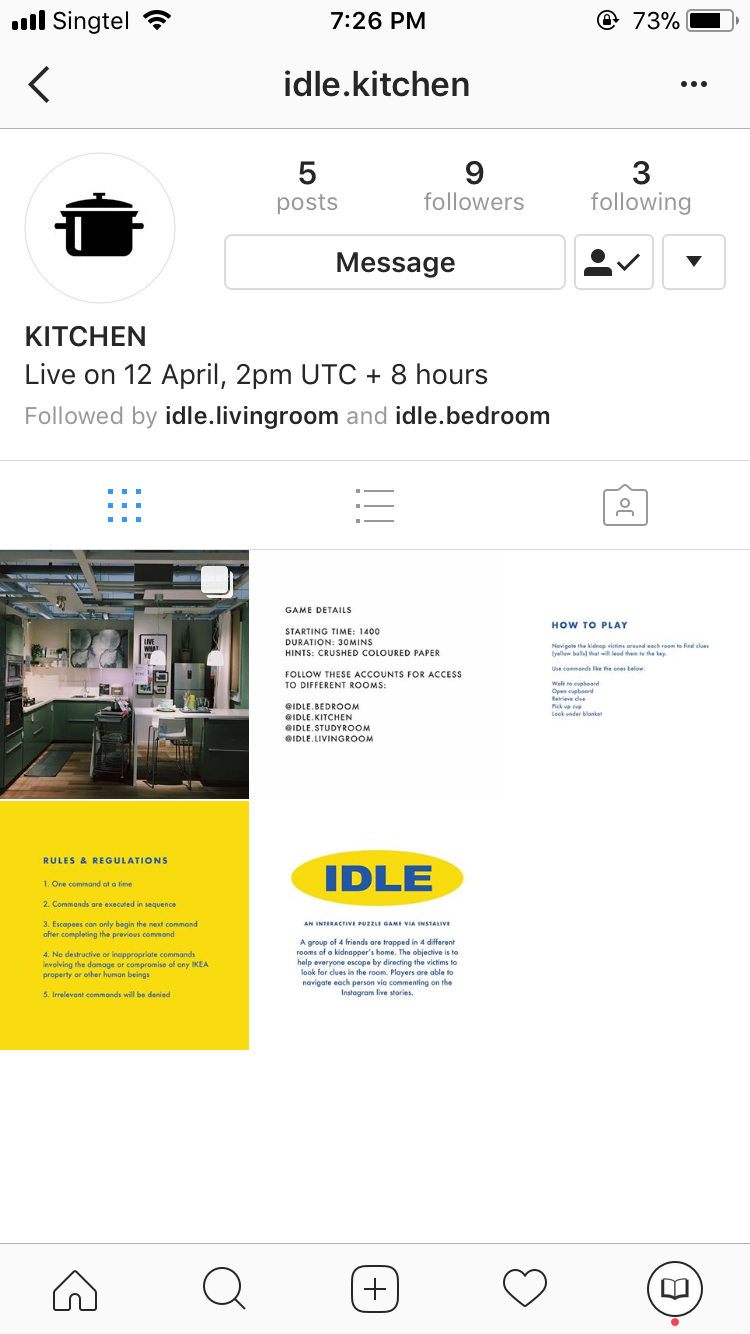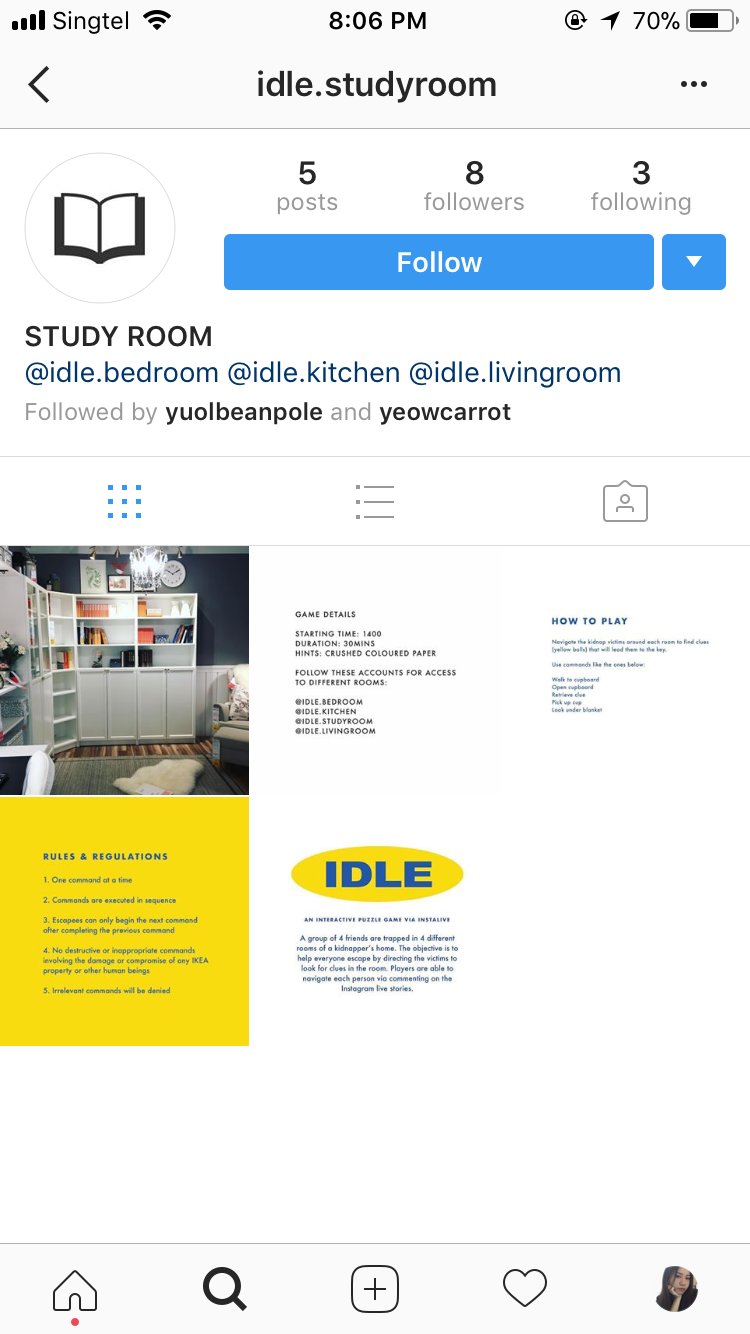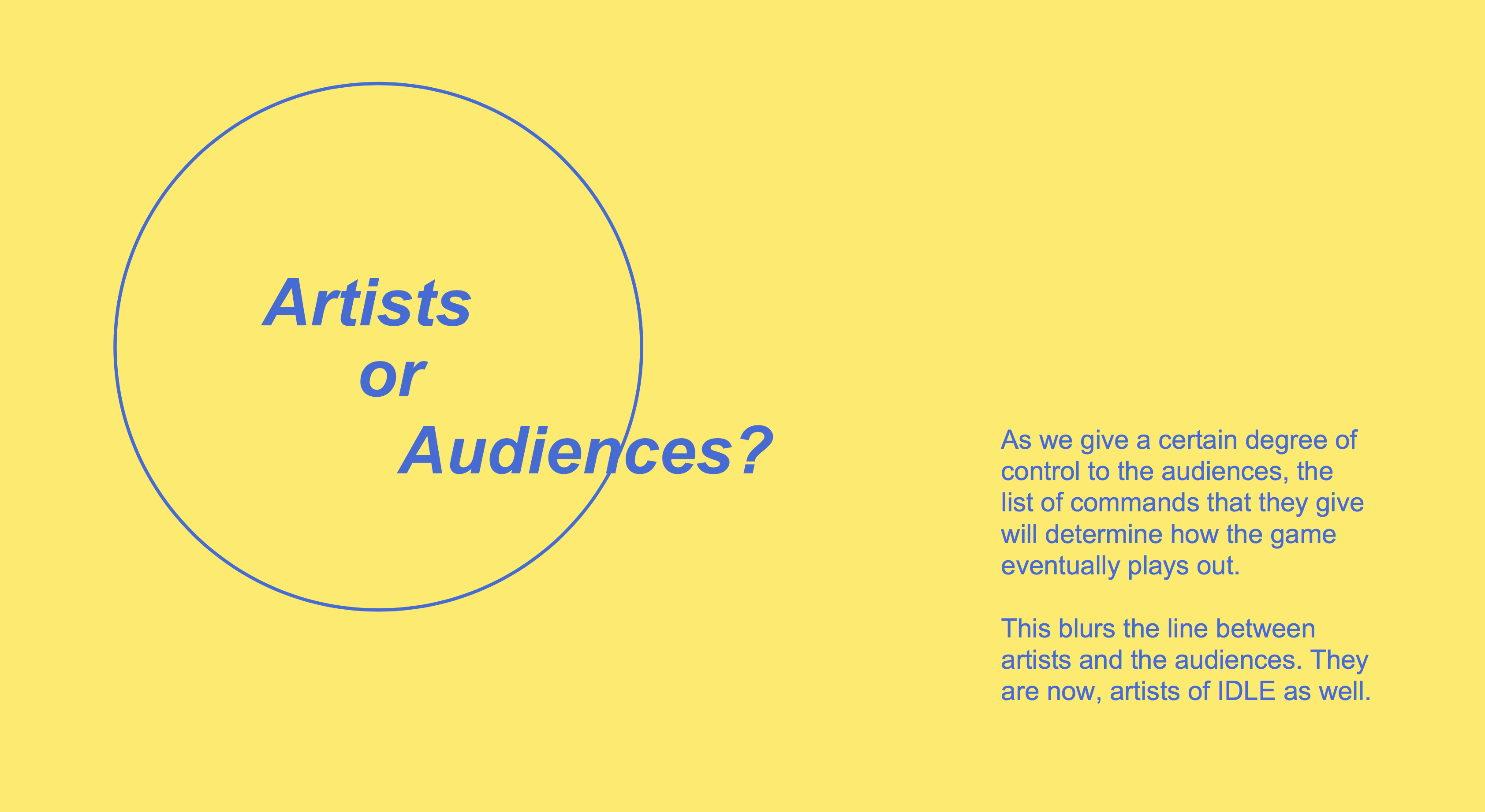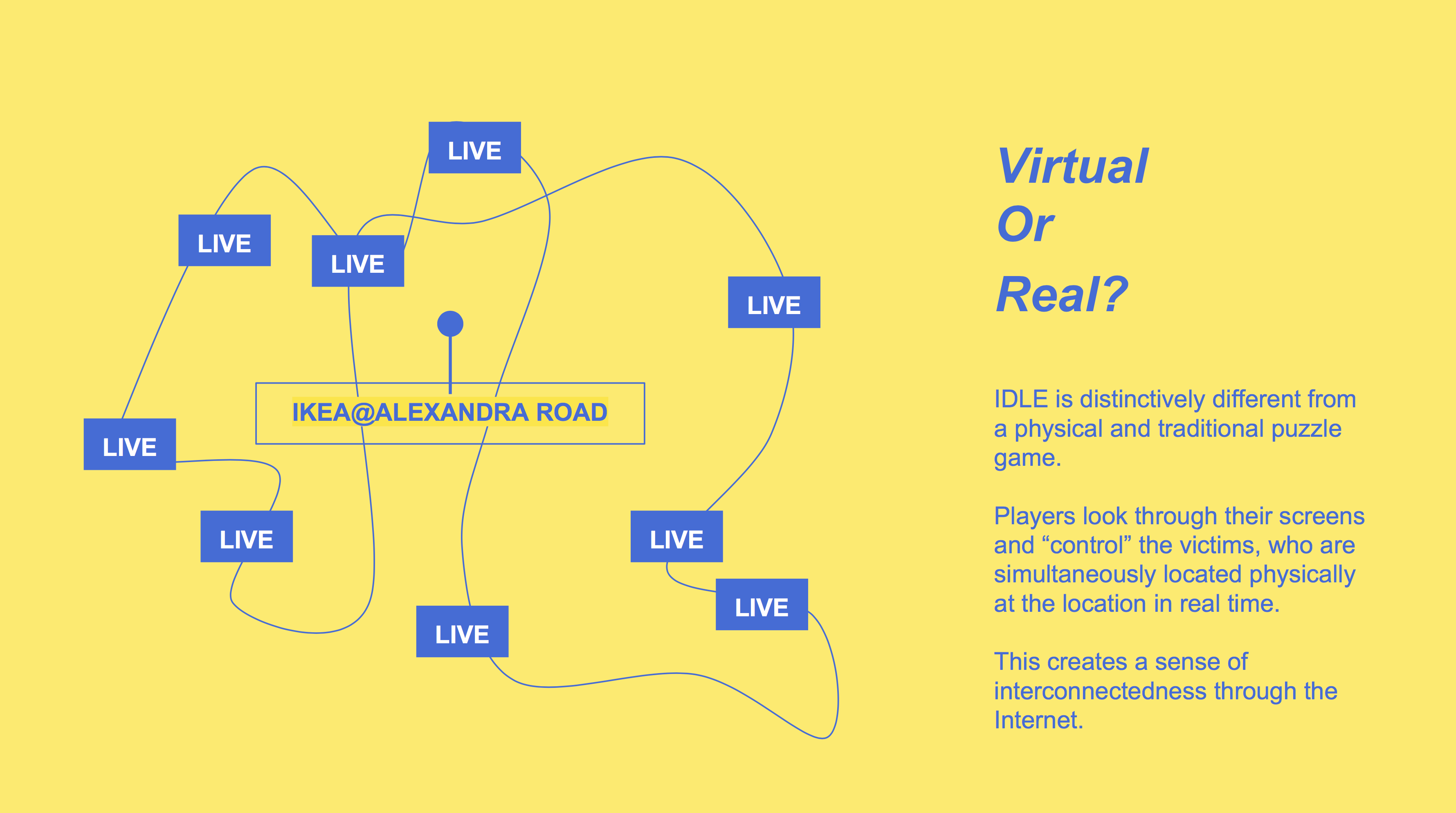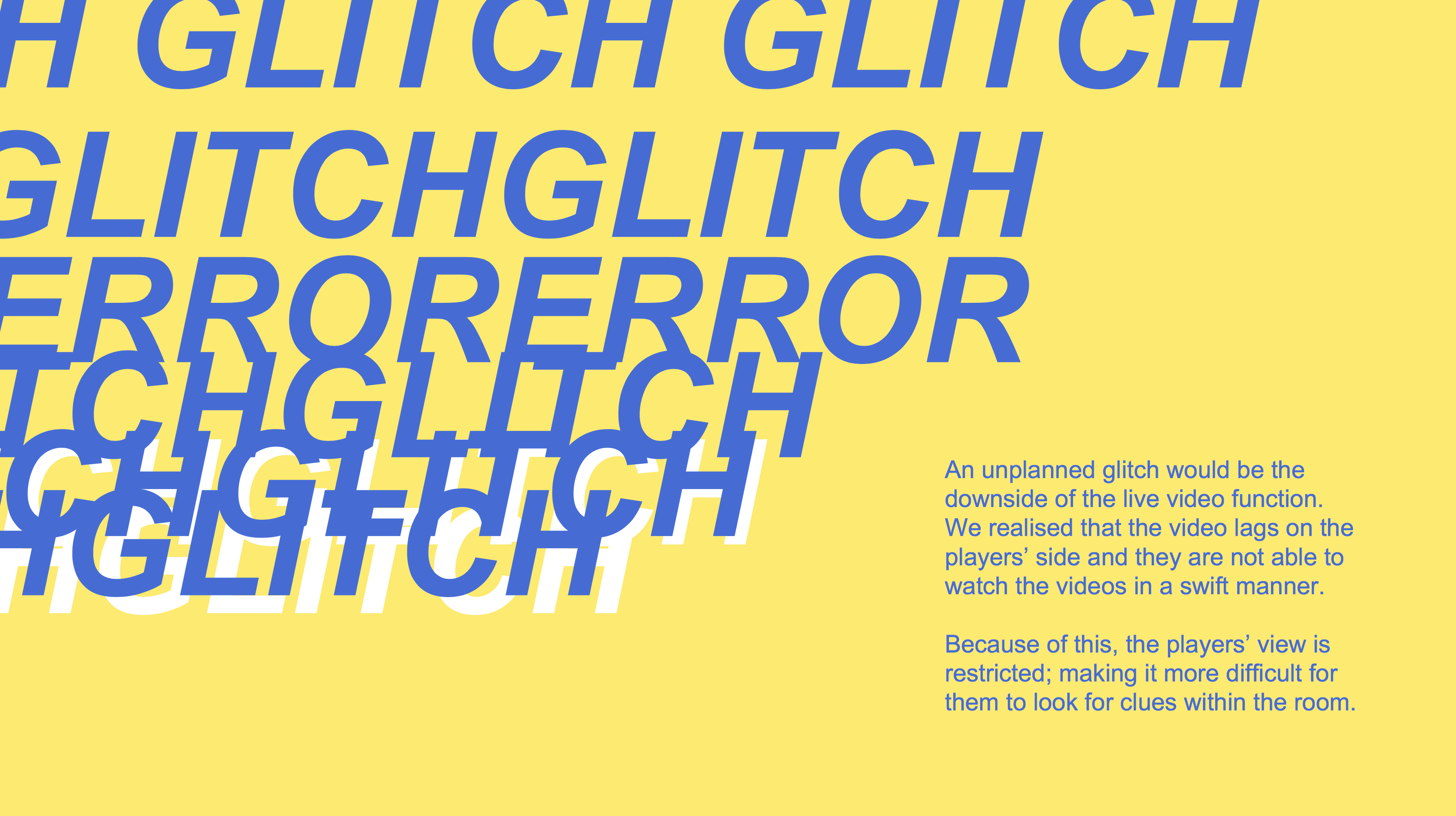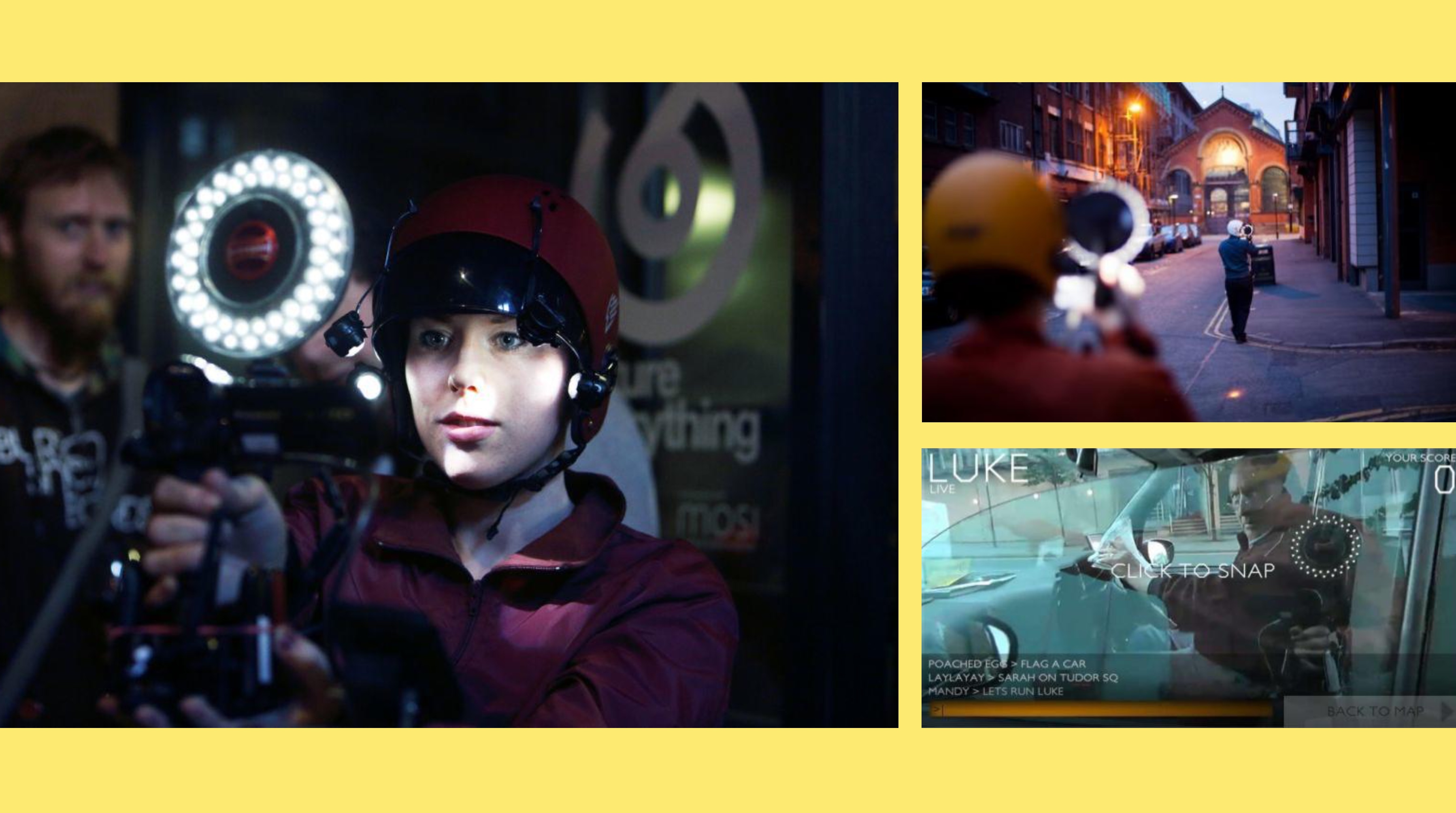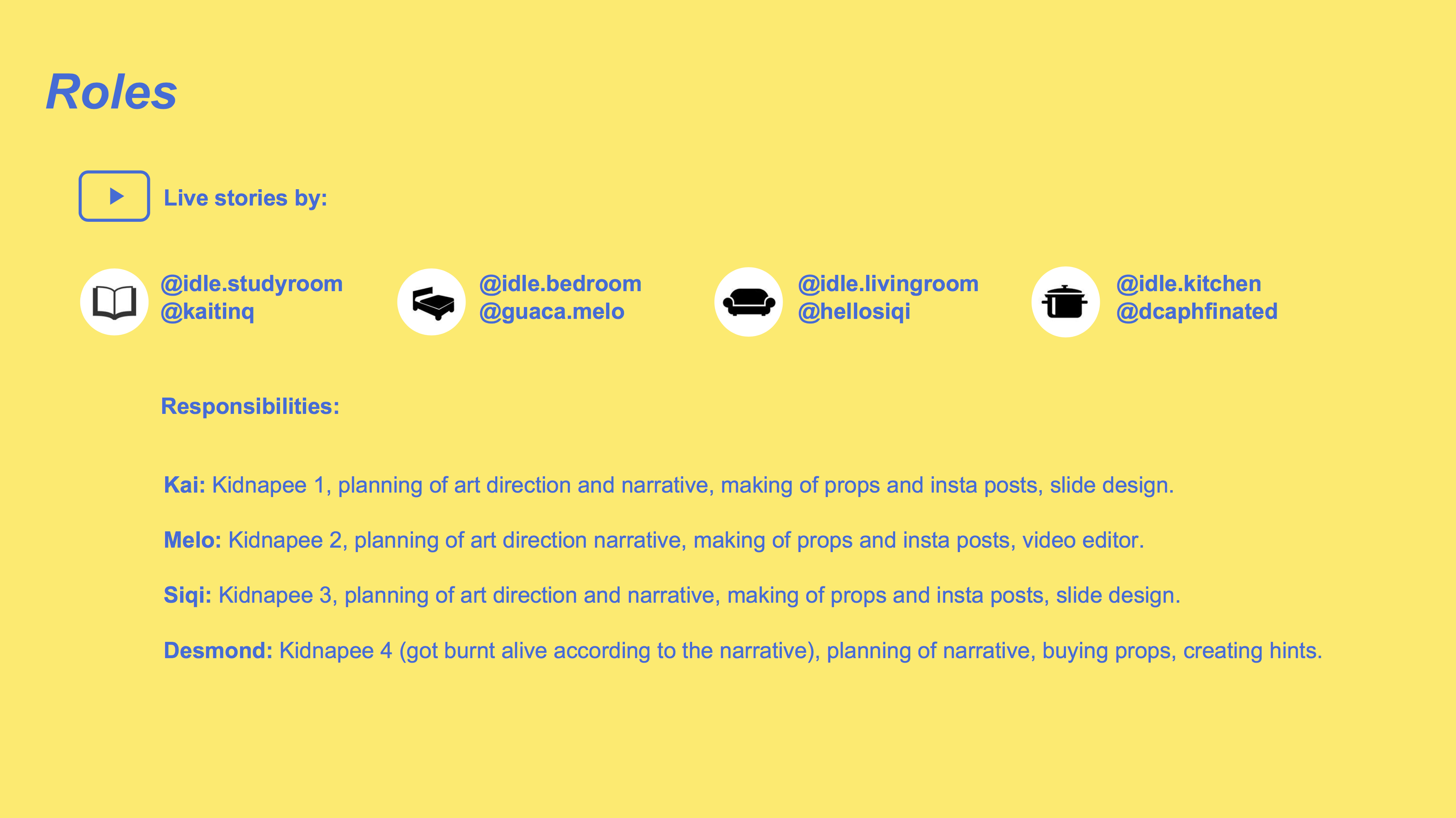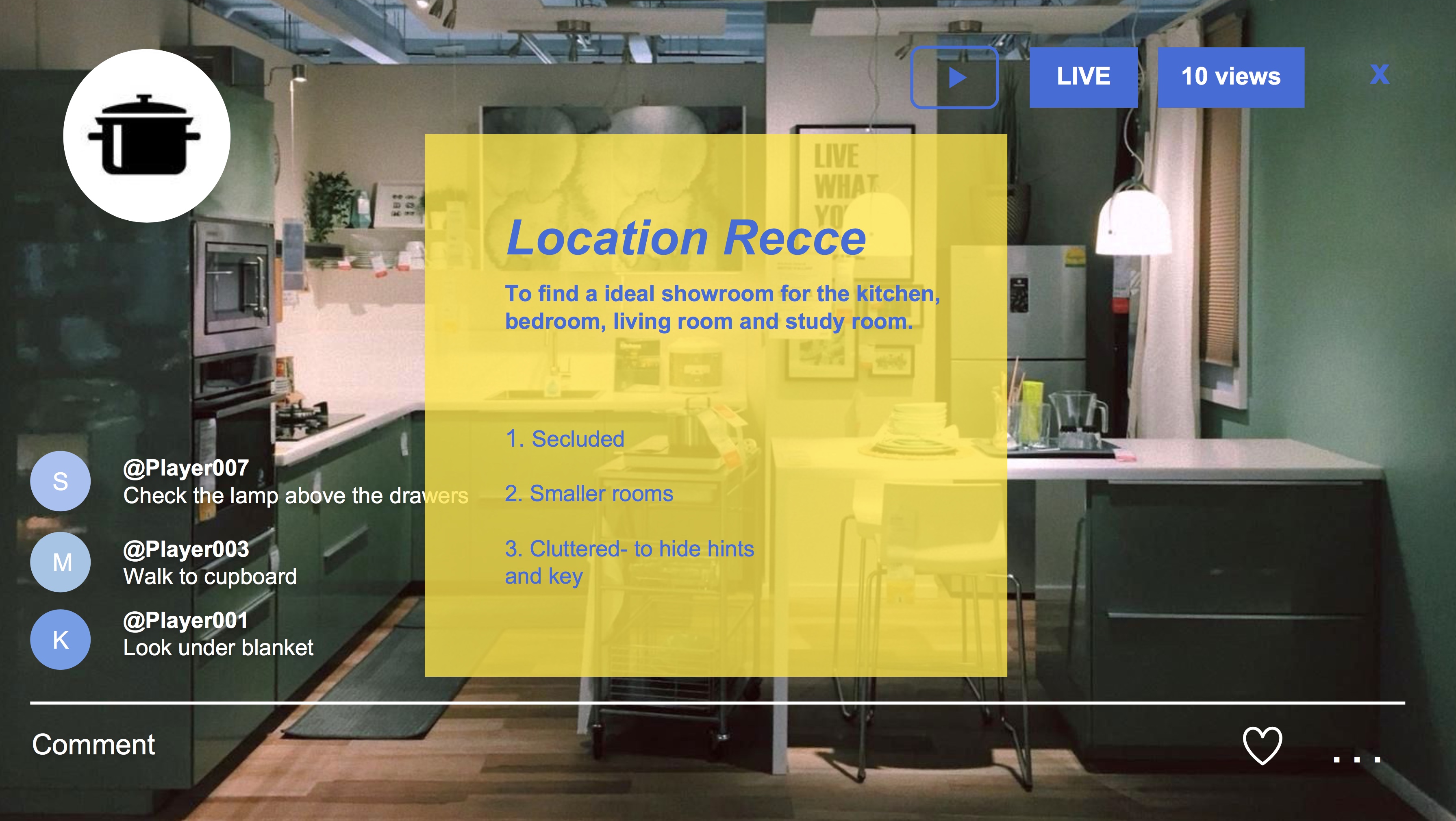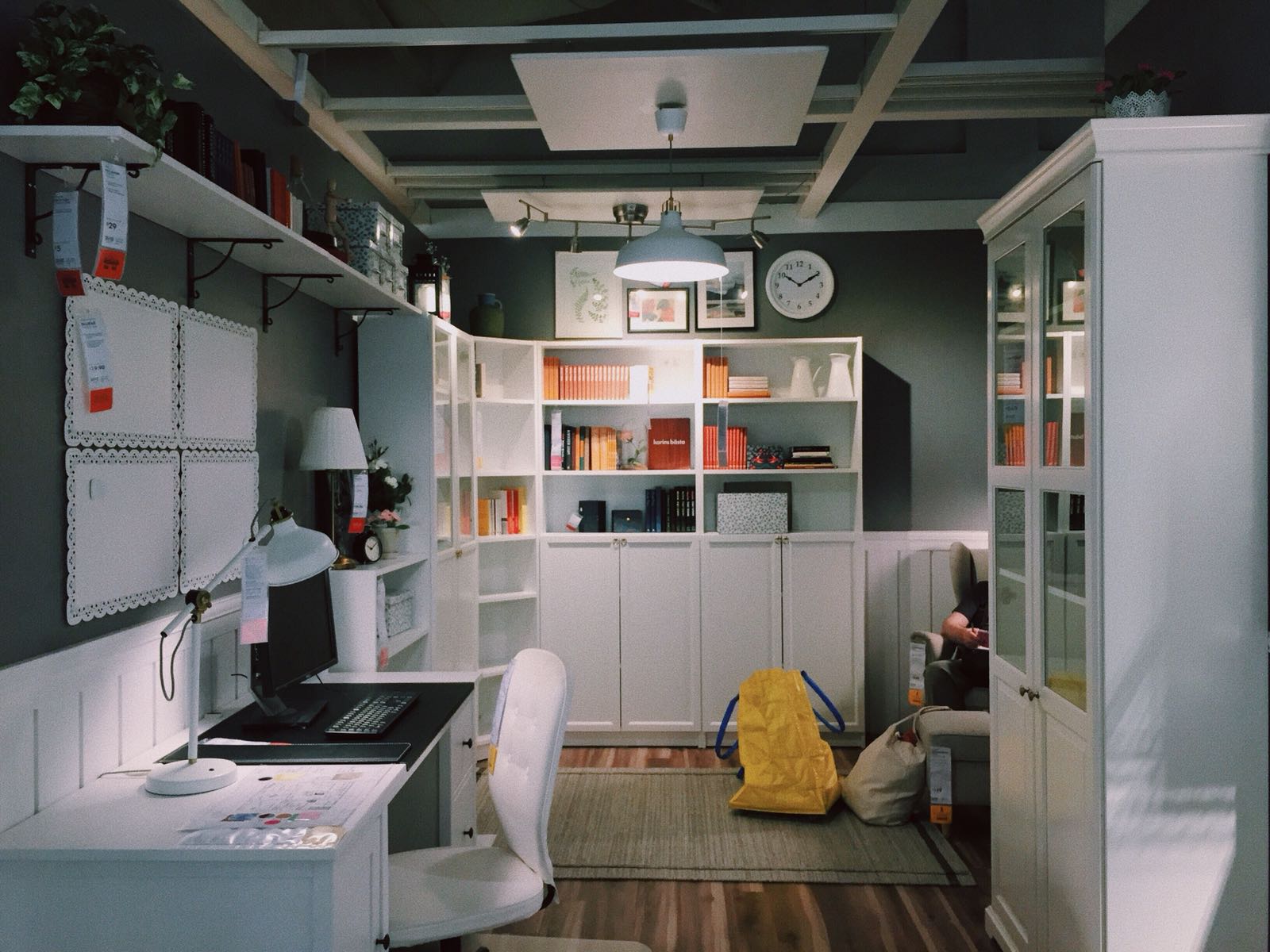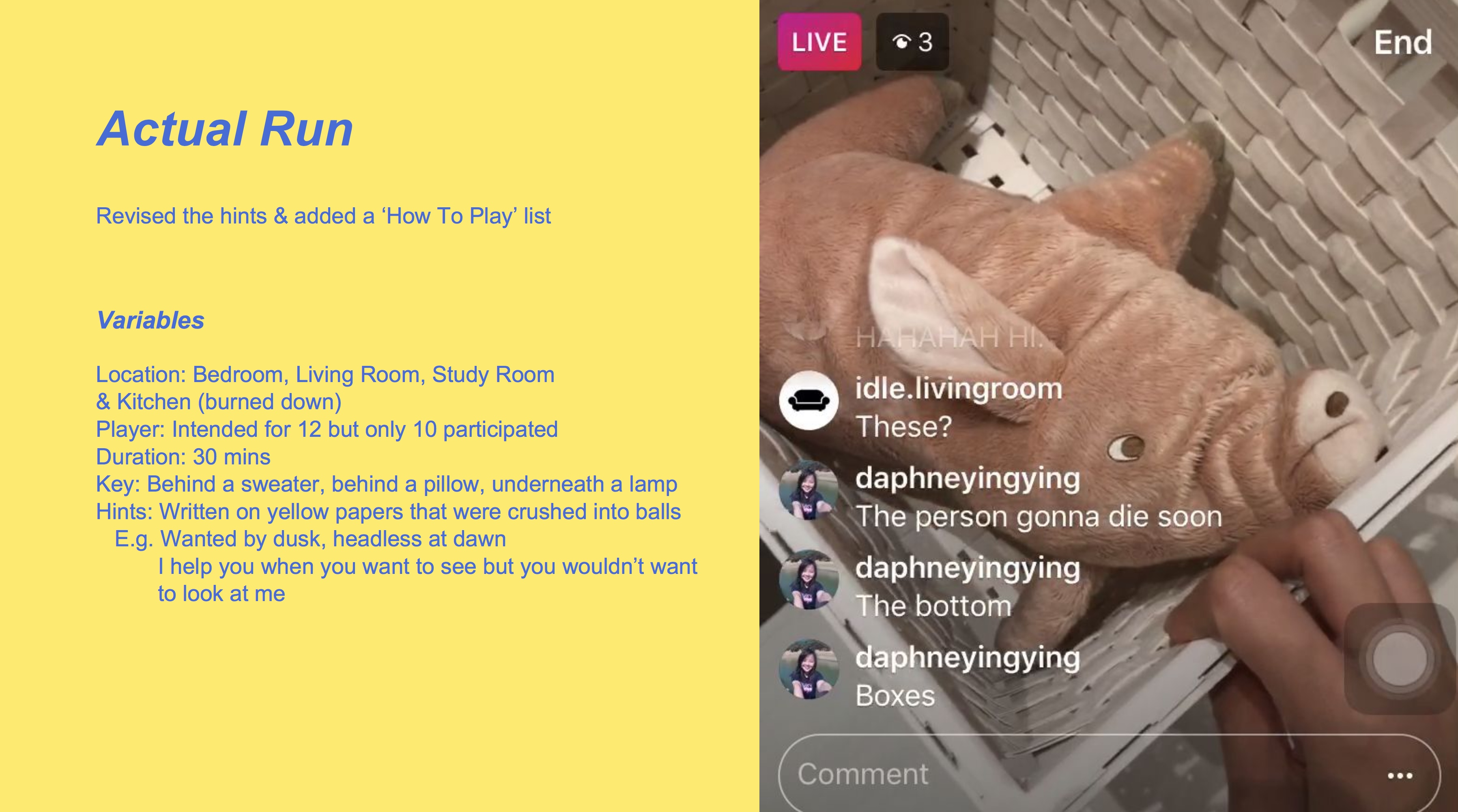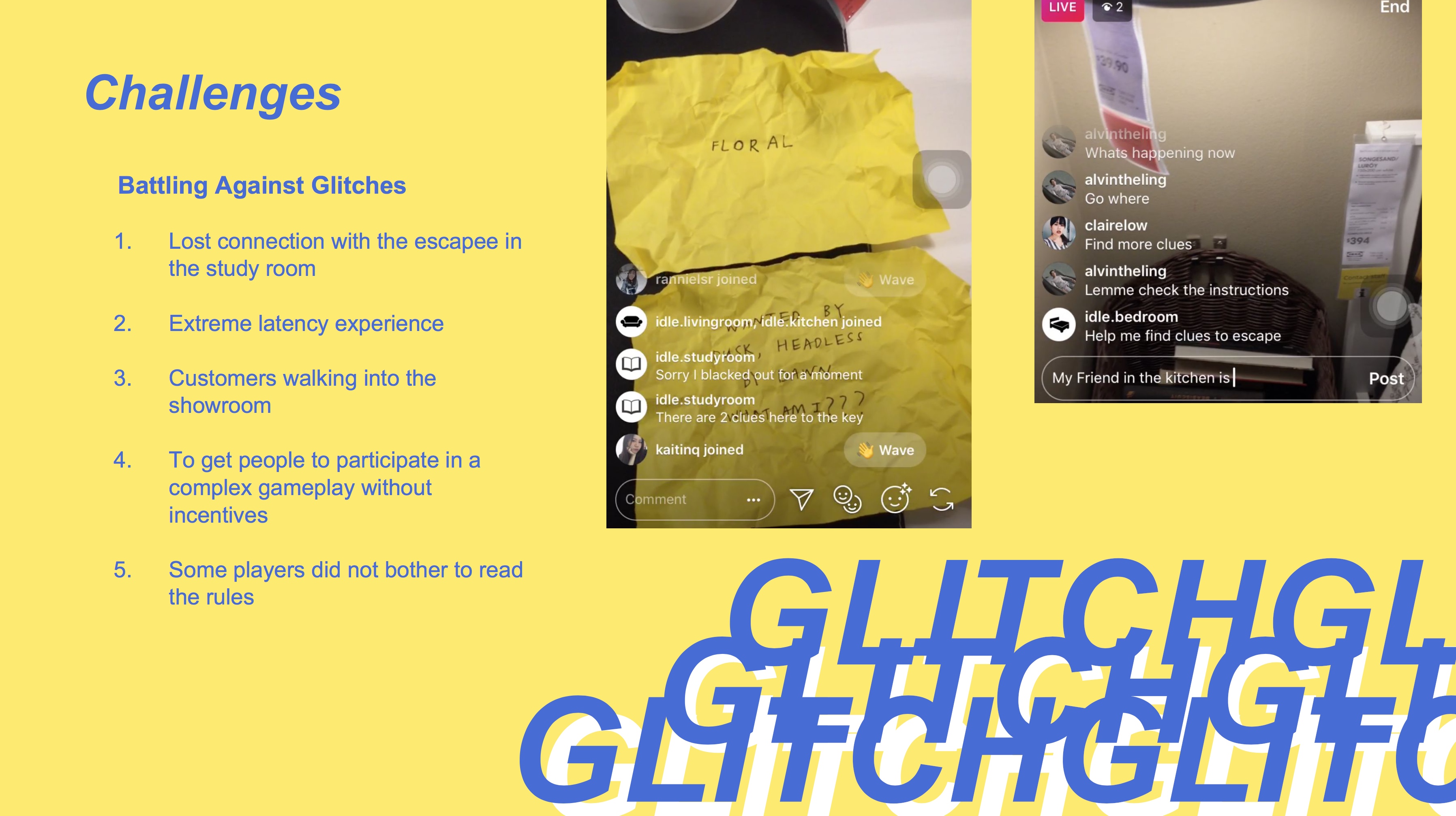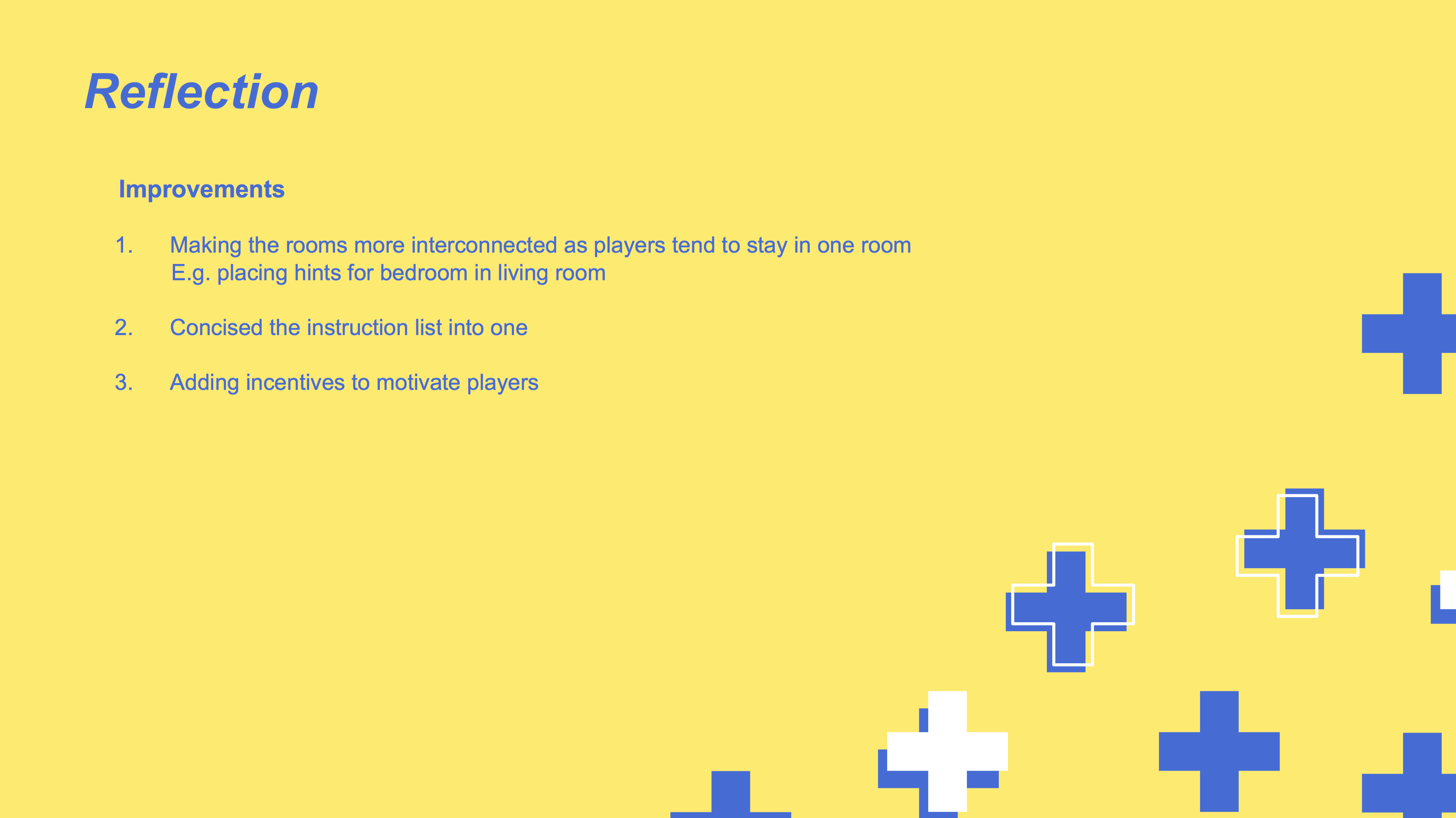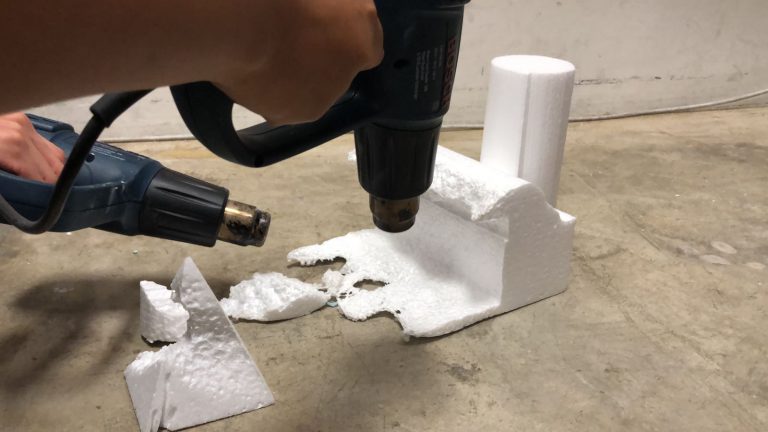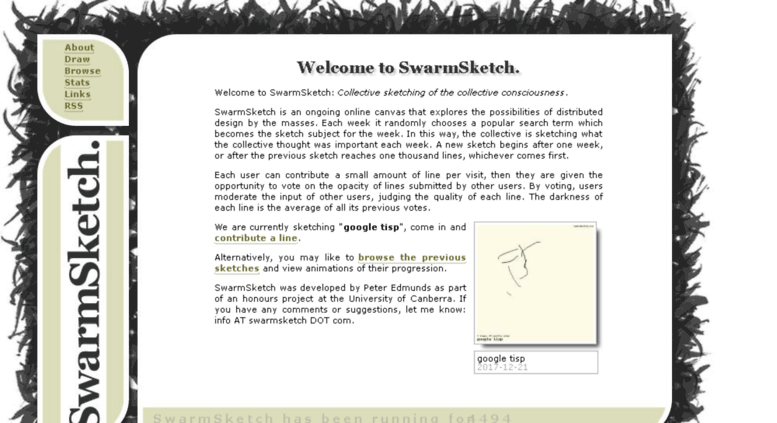IDLE – an interactive performance
My team, consisting of Kai, Si Qi, Desmond and I, planned to create an interactive performance set completely in IKEA. The idea stemmed from the location’s versatility, and the fact that there were many showrooms in the building that we could use to our advantage to blur the lines between reality and fiction. We would create a storyline with the different rooms and enhance the realness of it with Instagram live.
We created Instagram accounts for our performance and posted these two pictures to brief our participants on the rules and how to play before they participated.
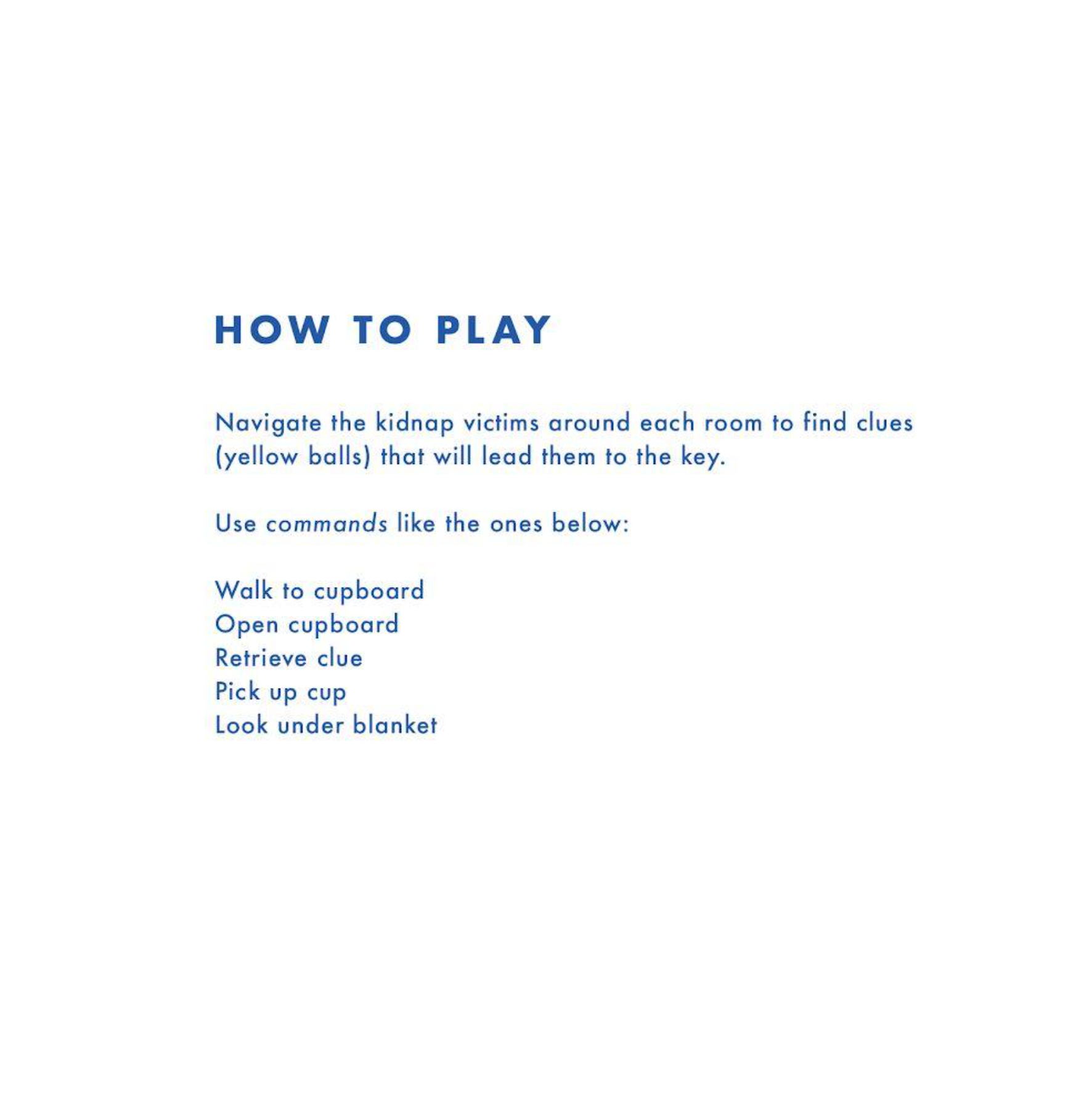 We wanted to include the culture of doing-it-with-others in our performance. That is why we chose the act of saving lives as the goal for our players.
We wanted to include the culture of doing-it-with-others in our performance. That is why we chose the act of saving lives as the goal for our players.
We also wanted to blur the lines between artist and audience and with our participatory performers, the audience would be performers too.
Idle was designed to be in the format of a game, where players had control over what the victims do.
The format of our performance and the medium we used gave room for error and glitches, whether technical or organic.
These glitches could function as disadvantages or advantages to the performance, creating that unexpected element when we decide how to respond to them.
We referenced Blast Theory as our main artist inspiration. I’d Hide you was one of their online games that we drew insight from.
 The main idea for I’d Hide you was to embrace the thrill of being in a whole new world through the third space where they had control over their destinies.
The main idea for I’d Hide you was to embrace the thrill of being in a whole new world through the third space where they had control over their destinies.
The game consists of players guiding 3 hosts on the ground to get a shot of each other on camera. Each host would have a camera that live streamed everything they saw and heard. The objective of the game for the players was to guid host that they choose toward other hosts.
Similar to I’d Hide You, IDLE gets online participants to jump from different livestreams to guide a person who is physically in the space. IDLE aims to immerse its audience in a world that we created in the third space and for them to create/uncover events within that world.
To start off, we took on a room each, as shown below, using four IKEA showrooms to carry out our performance in.
Kai, Si Qi and I went down to IKEA three times to location recce and plan the clues for our performance. We had ice cream and meatballs every time.
These are the four rooms we chose:
After settling the rooms we could use, we held a test run with our friends using one bedroom and figured out some issues. Here is the breakdown:
Here is a video of our test, password: behindthescenes.
A week later, after confirming our players and working out what we had to change, we had our actual run with all four rooms.
Here is the trailer we created after the run:
There were quite a few points that we observed about the actual run.
First, we noticed there were three main types of participants.
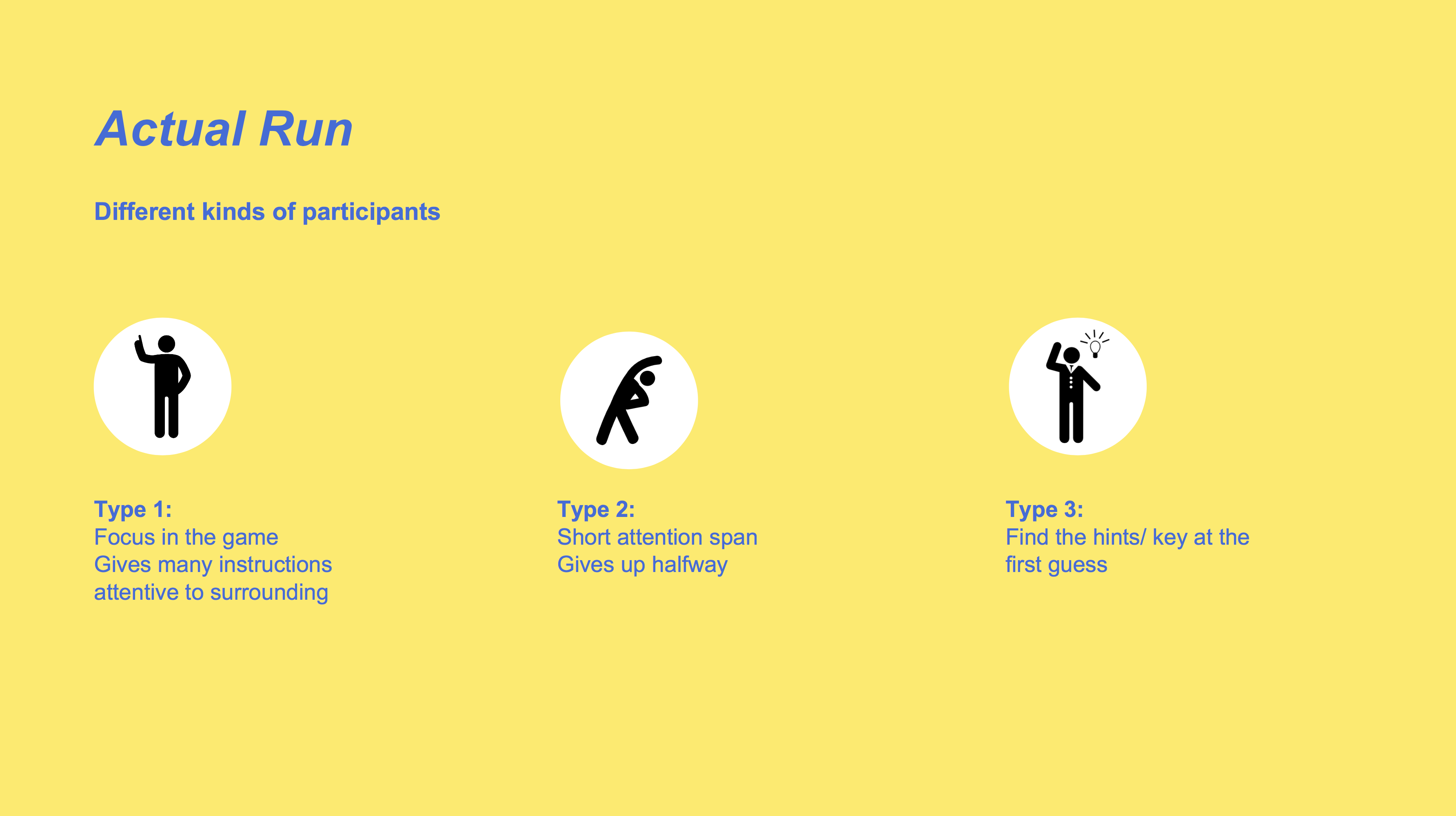
We also experienced a few challenges that we learned to embrace as glitches.
On the actual day, we acted spontaneously and decided to burn the kitchen down in order to add to our story. It would give reason to the 30 minute time limit to solve the puzzle and save the victims.
Firstly, Kai who was in the study room, lost connection halfway and had to end the live video. Using this mishap as another dimension to our story, we told Kai to let the participants know that she blacked out because of the smoke.
Secondly, we experienced an extreme lag during the insta story which led to some miscommunication between audience and artist. However, this gave an extra point of contact for the audience which caused them to interact more closely with each other.
Thirdly, there were some customers that entered the showroom and disrupted the gameplay. However, this served to remind the audience and us that this was not an actual room and further blurred the lines between reality and fiction.
Fourth, getting confirmed participants was a challenge for us as we were still finding people on the day itself to participate. Since we did not have any incentives, not many people were willing to commit to the performance. This helped us create a more close knit community within our participants.
Lastly, we had players who did not comply or bother to read the rules, which led to a lot of confusion in the gameplay. This too bonded both artist and audience.
On hindsight, some things we thought we could improve were making the clues interconnected between rooms to create a more complex and intriguing gameplay.
We could also have concised the instruction list into one and added incentives to gather more people to participate in the performance.
Overall, it was a special experience to be able to organise a participatory performance in public and create something out of it. I think the unexpectedness of the whole performance brought about a thrilling and exciting element to it. I think we were all surprised at how both we and the audience responded to the glitches and unexpected events that popped up. It was interesting to see how everything turned out in the end and how little things could cause drastic improvements in how the game was played out. It opened my mind to the embracing of the glitch and how it can, more often than not, be a blessing in disguise.
